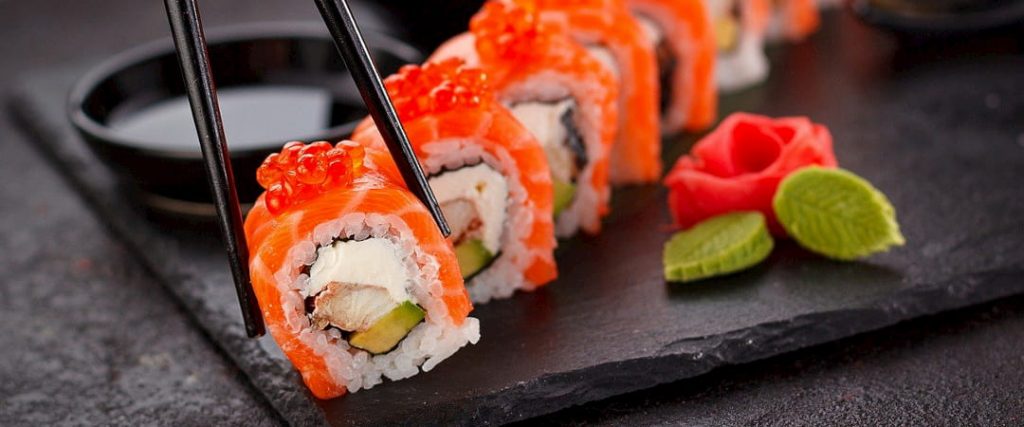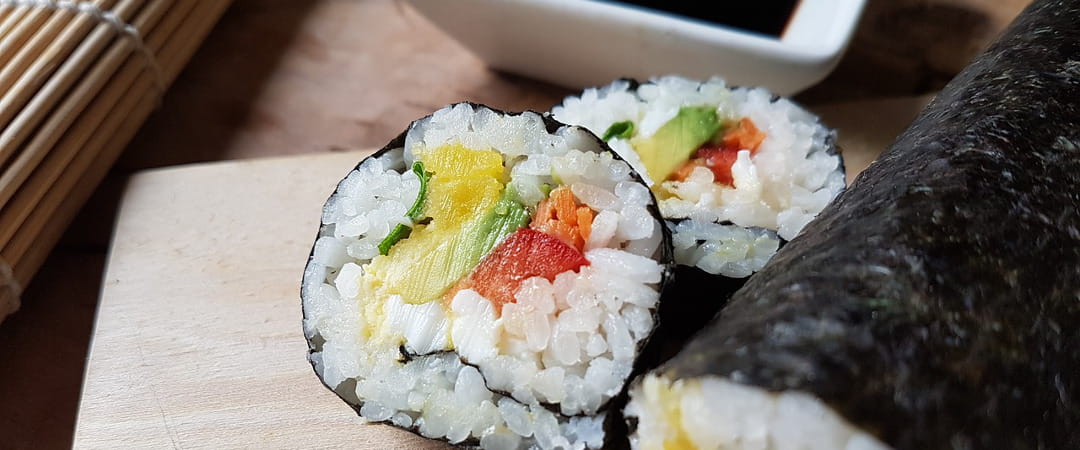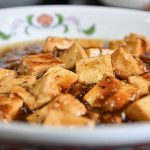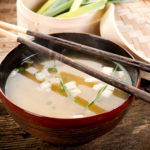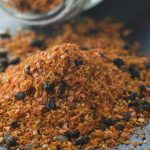In recent months, many people have been encouraged to try Japanese cuisine at home. In this sense, traditional recipes such as sushi have become the star dish for special lunches and dinners. Because it is one of the favourite dishes of adults and children, because it is fun to prepare and the youngest members of the household take part in its preparation, because we want to surprise our guests, etc… Whatever the reason, sushi has become one of those dishes that helps us to create unique and appetising moments with our family and friends. But do we know everything about this dish? Apart from nori seaweed, what types of seaweed can we use to make sushi? What use can we make of each of them to create different and healthy dishes?
What type of seaweed is used for sushi?
The most common answer: nori seaweed. And rightly so. Undoubtedly, nori seaweed is the seaweed par excellence of this dish made in Japan. But is it the only seaweed? No. There are others, which we will mention below and which we will highlight in order to discover how to get the most out of our sushi.
Nori seaweed, the best known seaweed in Japanese cuisine, stands out for its small, thin size and because it changes colour from black to green when it has been cooked. It is a seaweed that comes from cultivation and is dried in the sun or in the oven on bamboo mats for use in sushi. After this traditional drying, the seaweed is treated in sheets, and is distinguished by a rougher texture on one side and a smooth texture on the other. A flexible seaweed that we can mould to roll our makis. This seaweed can now also be found in snack format or as a dressing for our salads or oriental pasta dishes, or furikake, as well as an accompaniment to miso soup. It is undoubtedly the star seaweed!
But as we said, it is not the only seaweed that can be used to make sushi. For the preparation of this tasty dish we can use other versions such as: wakame, also very common in salads. This type of seaweed stands out for its intense green colour and can be found fresh or dried. When wakame seaweed is fresh, it stands out for its gelatinous texture due to its high water content. From a nutritional point of view, we can say that wakame seaweed has great benefits in terms of proteins and carbohydrates, as well as calcium and folic acid. Although, as we have said, it is usually presented in salads and as an accompaniment to sushi, it can also be used as a filling. This is how it is presented in an original recipe from Senen’s Kitchen: Foie and Wakame Seaweed Sushi.
Other seaweeds that can also be used for sushi or as a side dish are:
Tengusa seaweed: an essential seaweed in the preparation of the well-known agar-agar. This type of seaweed stands out for its yellowish to reddish colour, and because it can be eaten either hot or cold. Another seaweed that is also essential for the production of agar-agar is the ogonori seaweed. Both seaweeds are commonly found in fried versions of sashimi dishes.
Arama seaweed: Noted for its dark colour, sweet taste and somewhat crunchy texture, as well as its high nutritional content in iron, calcium and iodine. To consume it, it is essential to soak it for 20 minutes beforehand.
Hijiki seaweed: It is characterised by growing in size after soaking. It is usually served with carrots and soy sauce. Both can be found as a sushi topping or as part of a side dish or salad.
Tosaka seaweed: If we continue with the list of the TOP seaweeds for sushi, we also find among them the tosaka seaweed, also known as the cockscomb, which can be found in green, red or white. This type of seaweed stands out for its thick and curly stems, very common as a garnish for sashimi.
Suginori seaweed: This type of seaweed is thinner and more branched than the seaweeds mentioned above. It is also very common as an accompaniment to sashimi.
Pyropia tenera seaweed: We also want to mention this minimalist seaweed, also known as gim, a type of nori seaweed that stands out for its small size, reddish colour and delicate texture.
Buy online
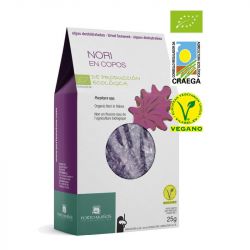
Alga nori en copos ECO (PORTO-MUIÑOS) 25g
4,65 €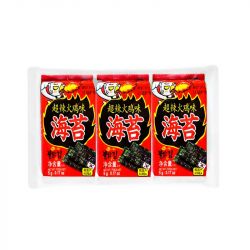
Algas nori snack picante (GIM) 3x5g
2,81 €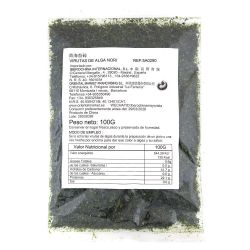
Alga nori en virutas 100g
6,69 €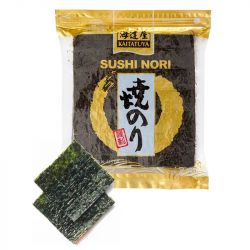
Alga Nori Sushi Gold Mitades 100 Hojas (KAITATUYA) 140g
22,19 €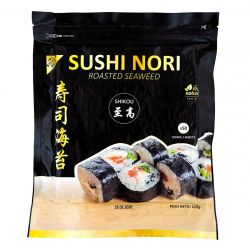
Alga nori premium 50 hojas SHIKOU 125g
9,70 €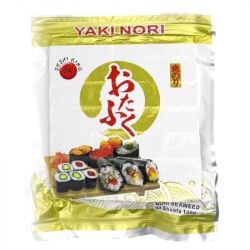
Alga yaki nori sushi 50 Hojas Gold (SUSHI KING) 140g
12,95 €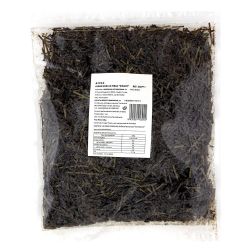
Alga nori tostada en tiras 100g
6,19 €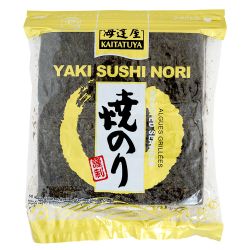
Alga yaki nori sushi 50 hojas Gold (KAITATUYA) 140g
22,19 €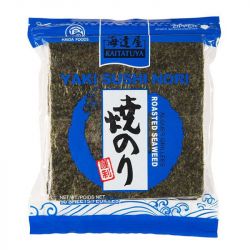
Alga nori sushi TEMAKI 100 hojas blue (KAITATUYA) 140g
19,59 €
Recipes with seaweed for sushi
We show you some of the most popular, easy and tasty sushi recipes that incorporate seaweed:
How to make HOMEMADE SUSHI step by step with nori seaweed.
How to make Sushi at home: California Roll and Maki Sushi wrapped with seaweed
How is authentic Sushi prepared in Japan?
How is seaweed used in the preparation of sushi?
As we have seen in the previous section, seaweed can be found in different ways when eating sushi. If we refer to the most common seaweed when rolling sushi, this is undoubtedly nori seaweed. This type of seaweed can usually be found in our online shop in packs of 10 sheets. To do this, simply place the sheet of nori seaweed on a mat and cling film, always with the rough side facing upwards. We then place the sushi rice and the vegetables or fish or other ingredients that we will use as fillings for our preparations. The nori seaweed, in its topping or snack version, can also be used to decorate our sushi.
We can use wakame seaweed for the filling. In this case we will be very discreet with the use of quantities. Just place a small amount inside, always in a horizontal position, just after the rice. We will place them close together so that they are pressed together when we roll up our sushi. The rest of the seaweed, which we can use as an accompaniment to our salads or with the sashimi, should be applied delicately to give that touch of sea flavour to our recipe at the top of the sushi, together with the wasabi (for example).

